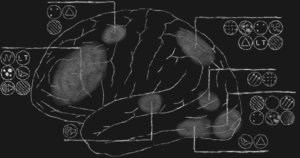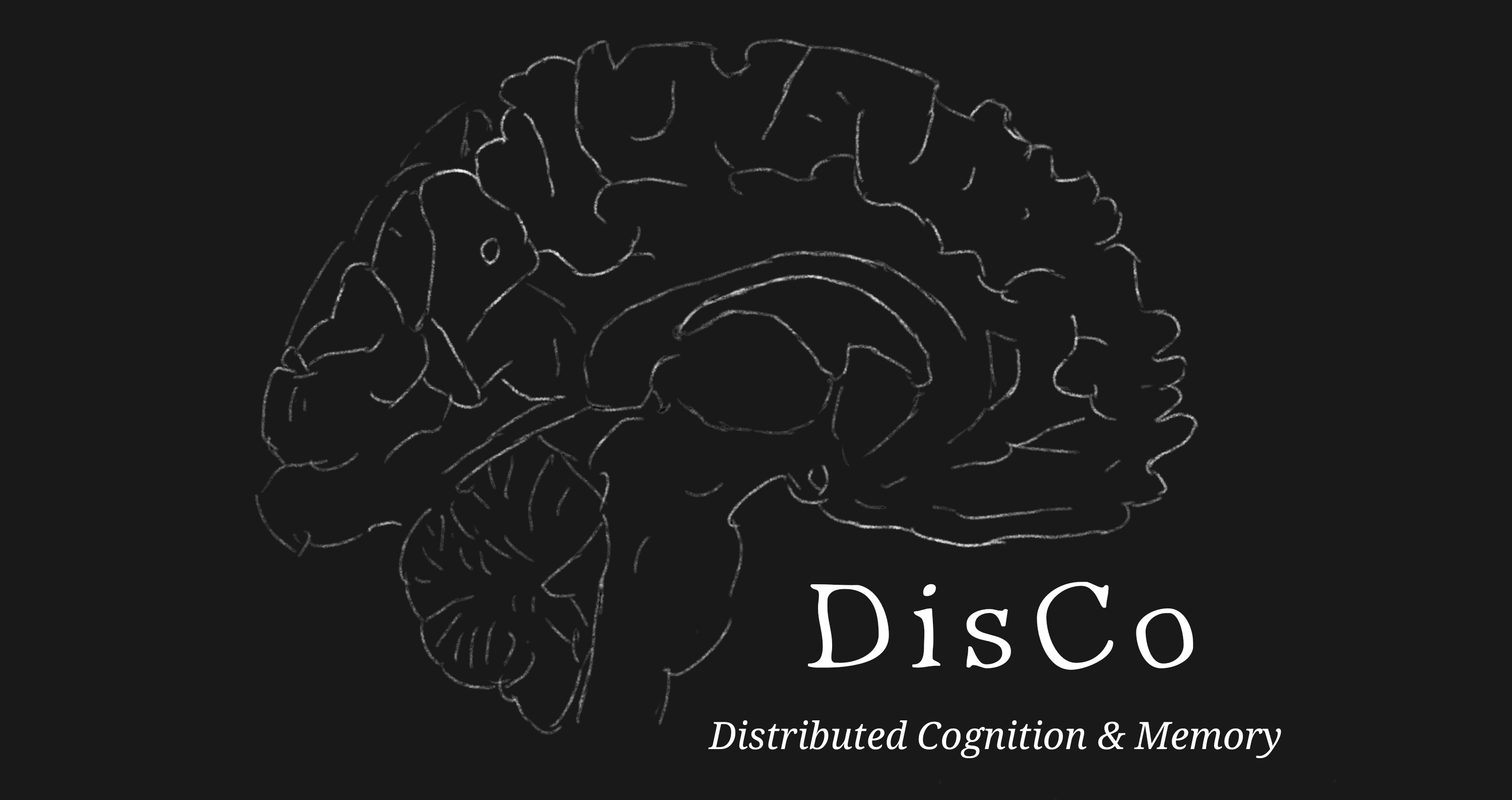Our Research
We are a research group at the Department of Psychology, HU Berlin. We aim to combine neural and behavioural data with machine learning to best understand the wonder that is human cognition. Recent work focuses on the study of the neural correlates of working memory. We are funded by an Emmy Noether research group grant by the German research foundation (DFG).

Our work is driven by the hypothesis that short-term information storage is a distributed cortical process. We use neuroimaging methods (predominantly fMRI) and multivariate pattern analysis techniques (‘machine learning‘) to identify brain regions which store contents held in working memory, study the representational architecture of these brain regions, and ask how memory storage is elicited and maintained in these areas. You can find our recent review on ‘The Distributed Nature of Working Memory’ here.
For more insights please have a look at our publications.
Click here for an informal overview talk presented as part of the HU Lecture Series on Cognitive Science 2021 (with suboptimal sound)
Ongoing Projects

Multi-modal stroage in a dynamic, distributed working memory network
The question where our working memories are stored does not have to have a definite, unitary answer. We know that many parts of the human brain can represent memorized contents – but how are these representations utilized and how do they interact? Vivien Chopurian and Zhiqi Kang joined the lab in 2021 to investigate whether short-term memories for visual and auditory contents are dynamically allocated to minimize interference. It might be easy to remember two very different contents (e.g., a sound and an image). When remembering similar contents (e.g., two images), however, the neural representations of these contents might interfere with each other, making it harder to arbitrate between them. In order to minimize such interference, these neural representations for different images could be allocated to different parts of the brain. Vivien will present some early results at VSS 2022.
The different neural codes for working memory

In a second line of research, we investigate the neural codes and strategies used during working memory. We recently submitted a preprint demonstrating that different brain regions use different neural codes to represent memorized contents (work with Chang Yan, Carsten Allefeld, and John-Dylan Haynes). We showed that regions of the ventral stream (areas V4 and V01) use a categorical mnemonic code during working memory, meaning that the colors are retained not as their original hues (its unique mixture of red, green and blue) but rather as belonging to rather broad categories (like ‘red’, ‘green’ and ‘blue’). We found no such benefit in sensory areas. This insight helps us to understand why different regions are used differentially during working memory. Joana Seabra and Andreea-Maria Gui joined the lab this year to dive deeper into this question. In particular, they want to find out what role is played by verbal neural representations and strategies while we memorize locations and orientations. When describing spatial properties (like ‘left’,’right, ‘horizontal’ and ‘diagonal’), can our word usage explain the errors we make during visual working memory? We are also investigating how verbal distractors affect visual working memory.
- Here is our color categorization paper (tweeprint summary, here; talk, here)
- Click here and here for Joana’s posters for VSS 2022 & 2023
- Andreea’s poster for VSS 2023 is here
Machine learning methods for reading overlapping brain signals
The central tools for our research are statistical and machine learning methods to identify neural representation of working memories and understand how they relate to behavior. A critical challenge for these tools is the overlap and interaction of multiple representations. How can we independently investigate these representations even if they are represented in the same region and how could representations of one item change if another is around? Thomas collaborated with Polina Iamshchinina, Surya Gayet, and Rosanne Rademaker on a commentary on pattern analysis for overlapping representations. We showed how analysis choice for discriminating overlapping representations, such as the selection of an appropriate training set (training on sensory or different mnemonic data) can greatly affect results. Currently, we are developing tools that allow us to quickly evaluate the effect of such choices across a large space of possible design and analyses approaches.
· Iamshchinina, P., Christophel, T. B., Gayet, S., & Rademaker, R. L. (2021). Essential considerations for exploring visual working memory storage in the human brain. Visual Cognition, 29(7), 425–436. (here)
Our Mission
We believe that research work is an inherent commitment to positive change. Part of our commitment is acknowledging the need for a change in the way we do research. In this part of our work, we pursue three goals.
- Fair work practices: We know that research can be an important, fulfilling and even joyous occupation. But work in academia can also be an abhorrent and unjustifiable risk to the health of those engaging in it (see here, here, and here). In our day-to-day operations, we aim at alleviating these risks to the best of our ability. We focus on long-term mentorship, continuous education, support culture, rapid iteration, and in-lab interactions with a low barrier to entry. We emphasize agency over hierarchic decision making, transparency over ambiguity, collaboration over individual ‘excellence’ and conflict resolution over authority. While we cannot change the reality of the academic job market (for now), we can change how we face it.
- Inclusivity: We acknowledge that academia is marked by intolerable inequality (see here, here, and here) and are committed to change it to reflect the diversity of our society. We aim to provide equal opportunities for minority groups and do not tolerate discrimination based on age, sexual orientation, gender and gender identity, national and ethnic origin, socioeconomic and family status, religion, or disability. We acknowledge that discrimination is often systemic and implicit, and that individuals of different backgrounds often face challenges in access to research employment. We want to do our part in decimating these biases in ourselves and academia in general and we support anyone speaking out against discrimination. We affirm that an inclusive work environment is a prerequisite for good research.
- Lasting discovery: Our work is aimed at producing lasting insight into the human mind. In other words, we happily chip away at the mountain range that is human cognition acknowledging that it might be decades until we understand the processes which make us human. We aim at aggregating insight in a transparent and fair manner, sharing code and anonymized data in a reasonable way, and publishing results responsibly. We believe that discovery in cognitive neuroscience is an inherently incremental and collaborative endeavour of numerous scientists, rather than the achievement of a few ground-breaking peers.
See here how we implement our mission in our day to day work.
